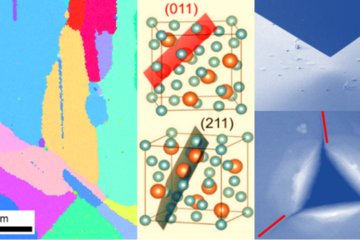All genres
1.
Journal Article
The protection zone: A long-range corrosion protection mechanism around conducting polymer particles in composite coatings: Part II. PEDOT: PSS. Journal of the Electrochemical Society 166 (12), pp. C314 - C320 (2019)
2.
Journal Article
The Protection Zone: A Long-Range Corrosion Protection Mechanism around Conducting Polymer Particles in Composite Coatings: Part I. Polyaniline and Polypyrrole. Journal of the Electrochemical Society 166 (12), pp. C304 - C313 (2019)
3.
Talk
Corrosion protection by composite coatings containing conducting polymer particles: elucidation of the “protection zone”. 232nd ECS Fall Meeting 2017, National Harbour, USA (2017)
4.
Poster
Corrosion protection by composite coatings containing conducting polymer particles: elucidation of the “protection zone”. Joint Eurocorr 2017 & 20th ICC congress, Prague, Czech Republic (2017)
5.
Poster
Investigation of the role of protection zone around conducting polymer in composite coatings in inhibiting delamination process. Gordon Research Conferences 2016, New London, NH, USA (2016)
6.
Poster
Investigation of the role of protection zone around conducting polymer in composite coatings in inhibiting delamination process. Gordon Research Seminars 2016, New London, NH, USA (2016)
7.
Thesis - PhD
Investigation of the “Protection Zone”, a novel mechanism to inhibit delamination of composite organic coatings containing conducting polymer. Dissertation, Ruhr-Universität Bochum (2019)











